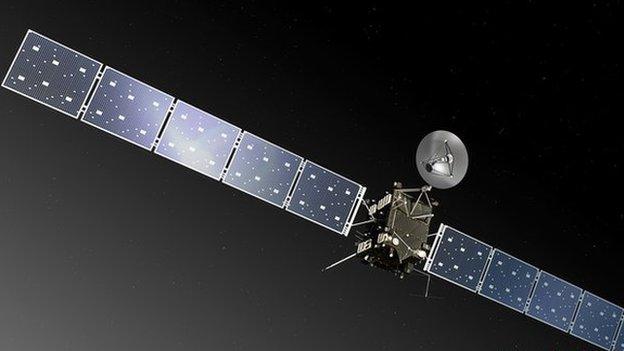Top 5 amazing space discoveries
- Published
The discovery of ice on Pluto is big news for the scientists studying our universe.
It's the latest breakthrough in space exploration and Nasa teams are currently looking into what the patches found on the dwarf planet could mean.
Hot on the heals of the discovery of flowing water on Mars it's been an exciting few months for space fans.
But how do the latest findings rank alongside some of the other things we've found out about the universe in the last 70 years?
Here's Newsround's list of the most amazing moments in space exploration ever.
1. A new dwarf planet
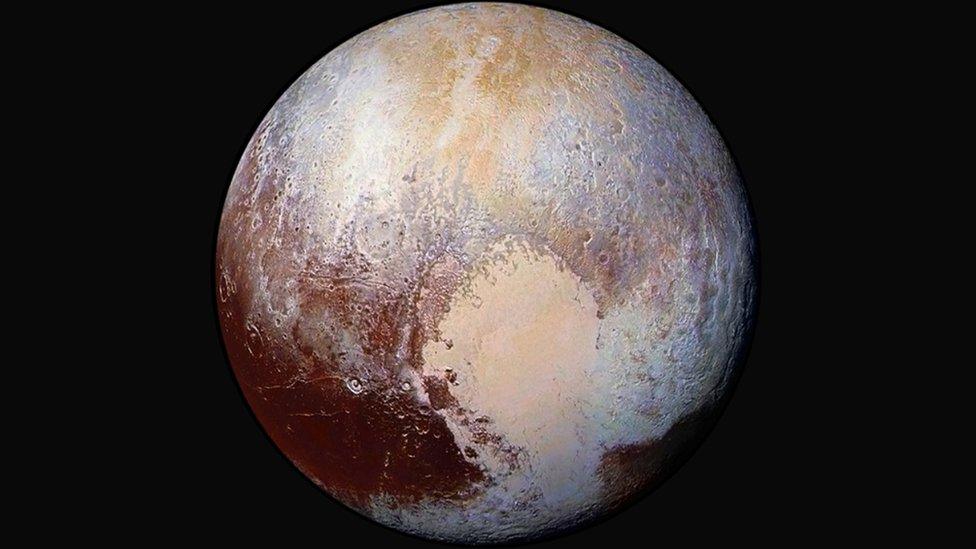
Pluto was declassified to a 'dwarf planet' in 2005, when a bigger planet was discovered.
Until 2005, the finest minds in space exploration had decided there were nine planets in our solar system.
As far as everyone was concerned Pluto was the ninth but that all changed with the discovery of Eris, a planet which was 27 per cent bigger than Pluto.
Both Pluto and Eris were then declassified as 'dwarf planets', and the number of official planets in our solar system dropped from nine to eight.
2. The discovery of exoplanets
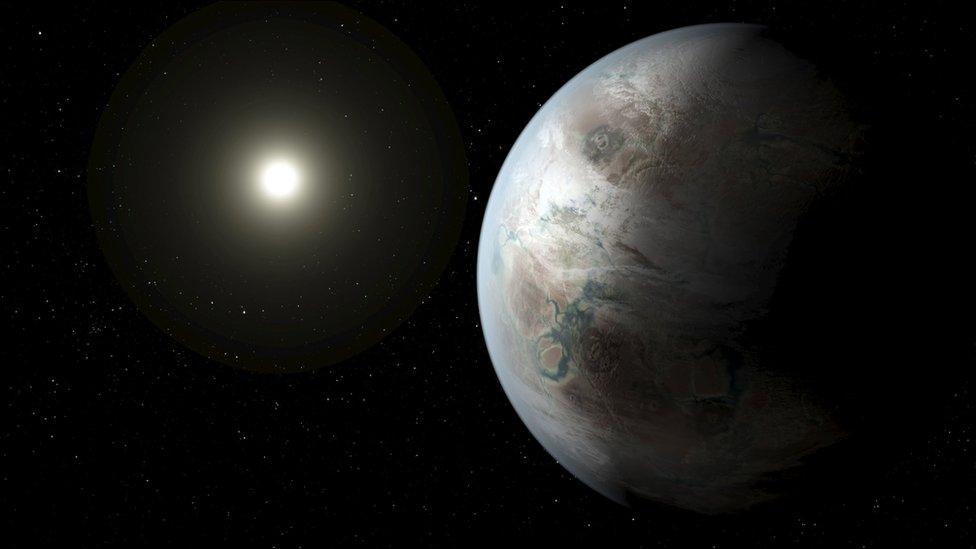
The exoplanet Kepler-452b was discovered earlier this year and has very close similarities to earth.
Exoplanets are planets that obit a different star other than our Sun - in a different solar system to the one we are in.
Even though scientists thought for a long time that they must exist, it was only in 1992 that the first exoplanet was discovered.
And further work to look for other ones has turned up some exciting results more recently too.
Earlier in 2015, scientists discovered the exoplanet Kepler-452b, which was described as 'earth's cousin' because of its close similarities to our planet.
Space experts say Exoplanets are really important because they raise the possibility that other life could exist in other solar solar systems.
3. Proving black holes exist
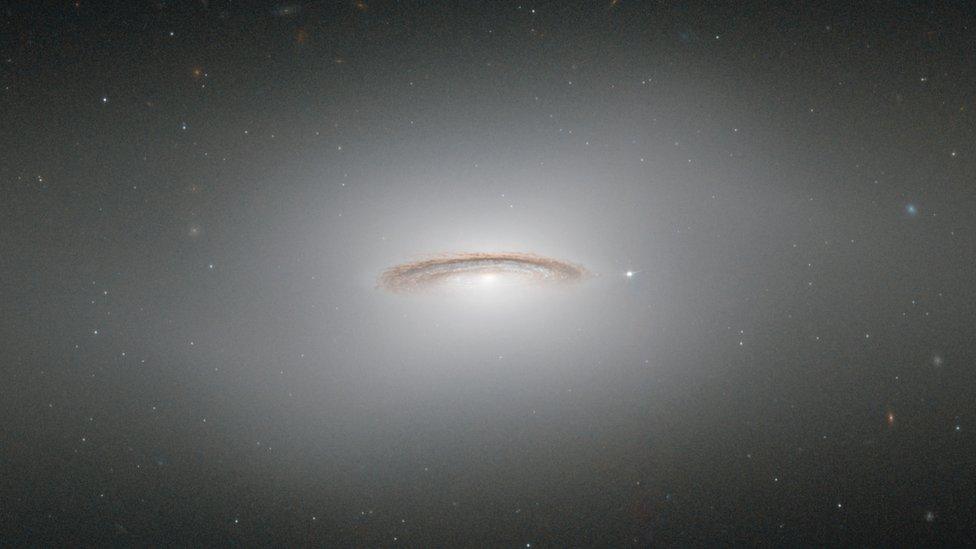
Pictures of distant galaxies like this, taken from the Hubble telescope, helped scientists understand more about black holes.
The idea of of a black hole has been around for centuries, but for years it was difficult for scientists to prove they existed.
Then, in 1990, the super strong Hubble telescope was launched into space. It was designed to take clear pictures of the deepest parts of space and these pictures have helped to prove the existence of black holes.
Hubble can't see black holes themselves, but it can see where a black hole has pulled in matter from around it.
Black holes are believed to be dying stars that collapse inward from their own weight. Their pull of gravity becomes so strong that even light can't escape, which is why it looks black.
4. Exploring Mars for the first time
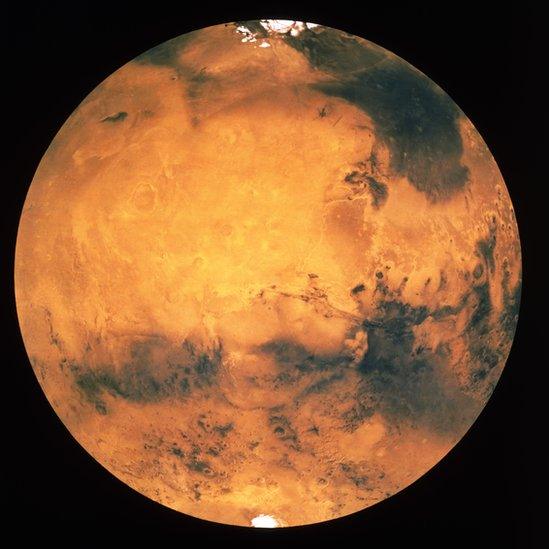
The Viking spacecraft took the first colour photos of the surface of Mars in 1976.
In 1976, Nasa's Viking mission became the first successful spacecraft to land on Mars.
It returned amazing colour pictures, soil samples and extensive scientific information about the planet. The craft also carried out an experiment which, for the first time, suggested that life might be possible on Mars.
Exploration on Mars has continued with the Curiosity Rover and more recently the announcement that liquid water was found on the red planet's surface. Scientists say this raises the possibility that life could exist on the planet.
5. The first landing on a comet
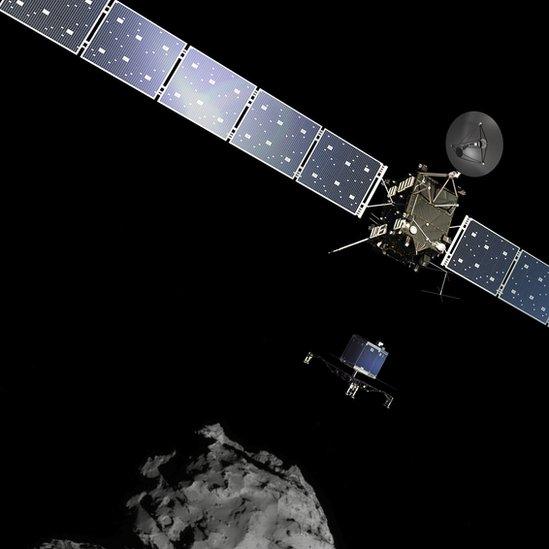
A drawing of the moment the Rosetta spacecraft landed onto a comet.
The Rosetta mission became the first to successfully land on a comet in 2014.
It was seen as an historic moment as it allowed scientists to study the materials that make up a comet for the first time.
Ongoing tests from the comet hope to find out more about how the universe was formed.
- Published9 October 2015
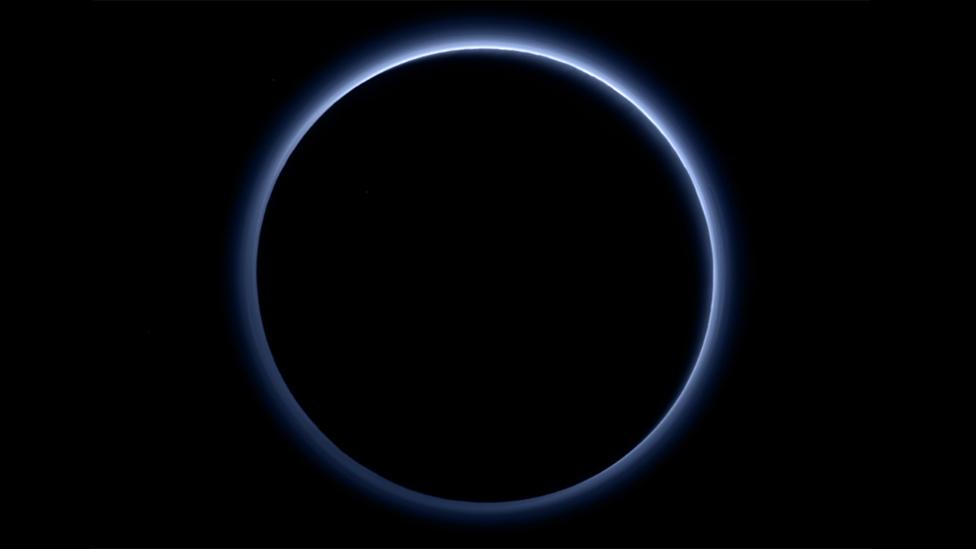
- Published29 September 2015
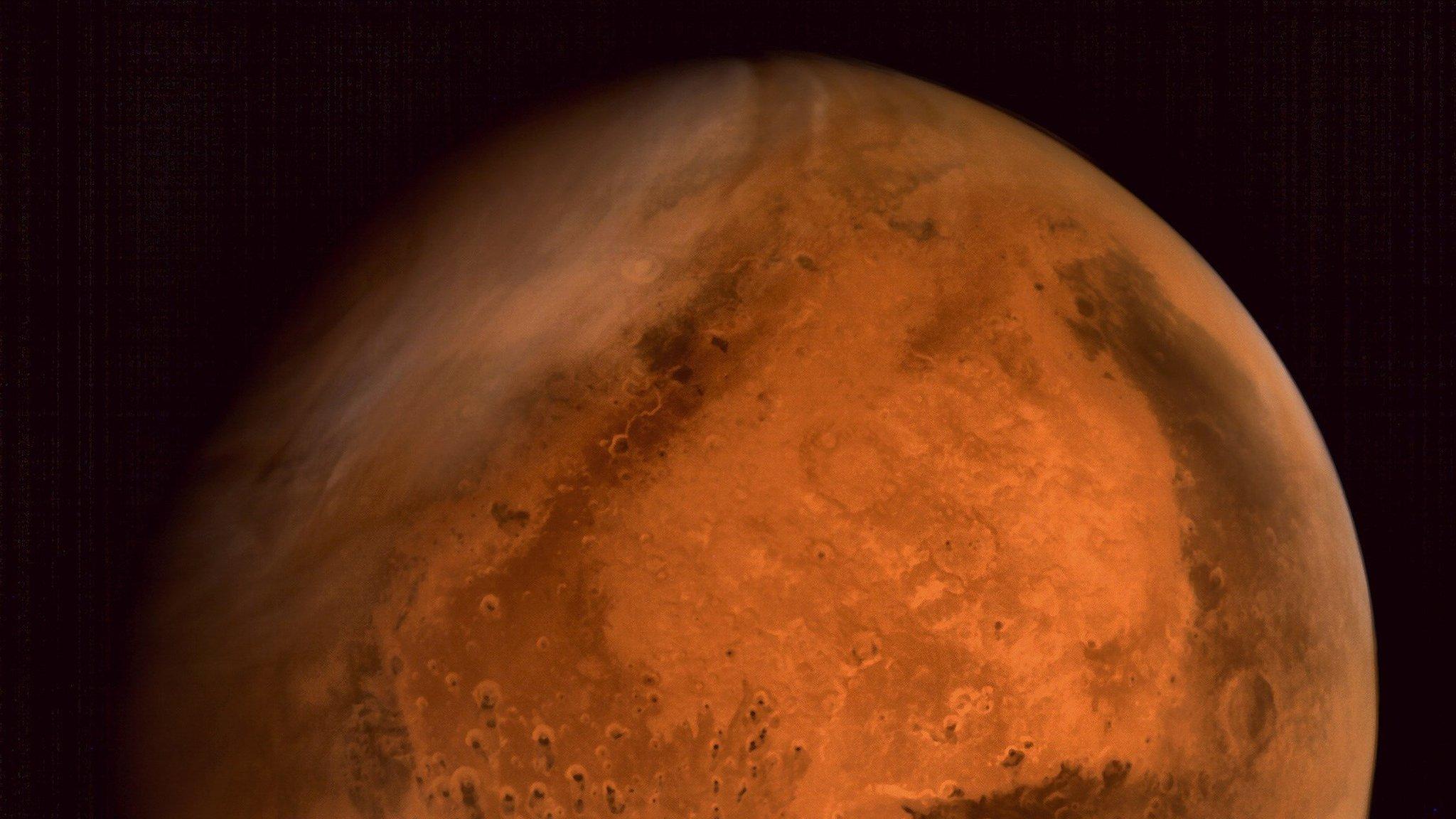
- Published25 July 2015

- Published29 September 2015
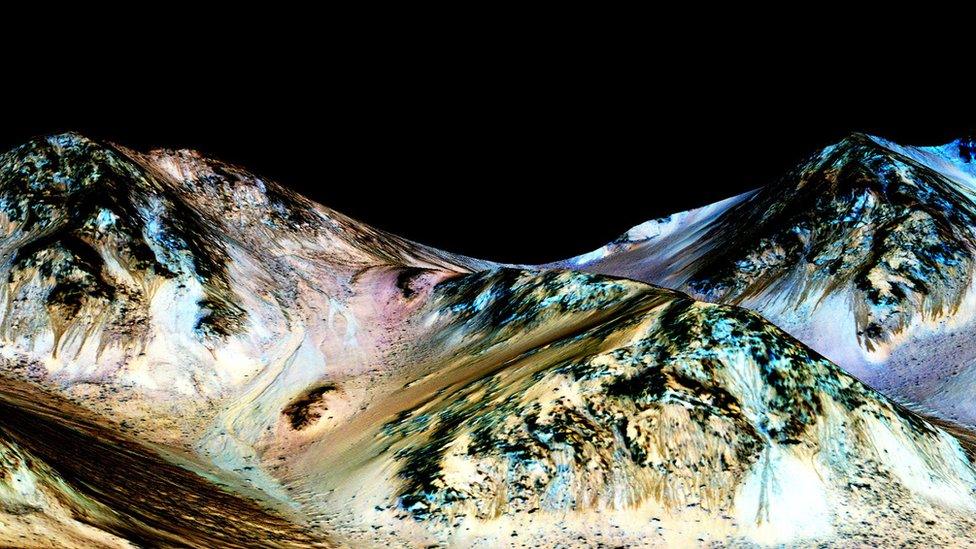
- Published11 July 2015
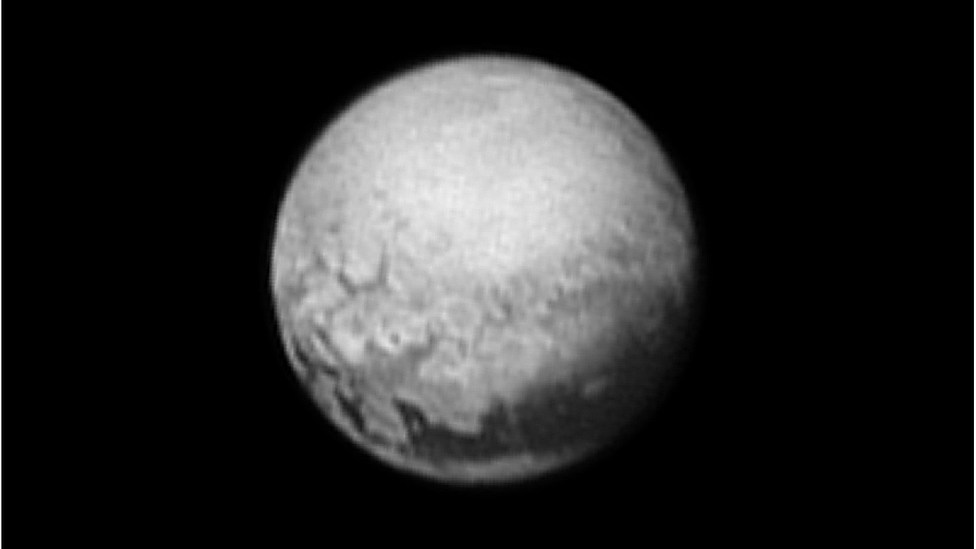
- Published12 June 2015
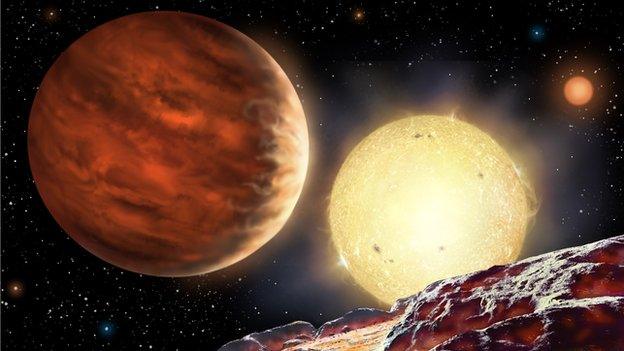
- Published13 November 2014
